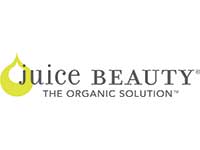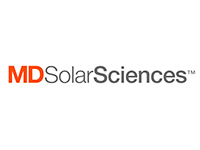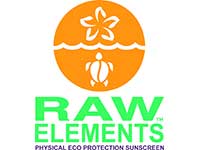

Americans do not do enough to protect their skin from sun damage and prevent skin cancer. Because we are stronger together, Environmental Working Group, forward-thinking companies and concerned citizens are teaming up to make a difference.

The sun's ultraviolet radiation is responsible for 80 percent of facial aging signs such as wrinkling, dryness, sagging and spotty pigmentation, according to a study by L'Oreal Research (Flament 2013). UV-induced aging, which is irreversible, is most pronounced in fair-skinned individuals with many years of exposure to intense sunlight. But individuals of all skin types experience changes in facial appearance caused by UV exposure (Battie 2013).
Unlike sunburns and suntans that appear over the course of few hours or days, photoaging, meaning external and internal changes in sun-exposed skin, develops over decades (Gilchrest 2013; Uitto 2008). People who want to protect their skin must avoid intense sun exposure, wear a hat, sunglasses and sun-blocking clothing and make judicious use of a balanced sunscreen that protects against all types of UV radiation.
UV exposure initiates inflammatory processes in the skin, amplifying the direct damaging effects of UV radiation and causing vascular changes such as redness and flushing (Bennett 2008). It can deplete vitamins and antioxidants in the skin.
UVB rays, which have shorter wavelengths and higher energy, cause DNA damage and photoaging in the epidermis, the outer layer of the skin. UVB is the chief cause of sunburn and skin inflammation. UVA rays, with their longer wavelengths and lower energy, penetrate deeper into the skin. They play a major role in skin aging and wrinkling (Mac-Mary 2010). Both UVB and UVA rays can cause gene mutations and skin cancer. The exact mechanisms of UV-induced skin cancers are still being investigated (Halliday 2008).
Chronic UV-overexposure can impair the skin's immune system, degrading the skin's ability to protect the body from disease-causing microorganisms and to heal wounds. The number of skin immune cells significantly decreases as a consequence of both UV exposure and normal aging processes (Bennett 2008). UVA rays are more harmful to the immune system than UVB rays. Undermining the skin immune system may weaken its ability to resist skin cancer (Baron 2003).
The eyes and skin around the eyes are particularly vulnerable to damage by UV rays. Wearing sunglasses protects the fragile skin around the eye from excessive UV radiation and decreases the risk of eye damage.
Eye diseases linked to UV exposure include inflammation, cataracts and eye cancers (American Academy of Ophthalmology 2007, Wang 2012). Outdoor sports enthusiasts, such as mountain climbers, are always warned about the dangers of UV radiation to the eyes (Mader & Tabin 2003).
Ground-level ozone, a pollutant emitted by car and truck exhausts, can contribute to loss of vitamins and antioxidants. As well, ozone and other pollutants can aggravate the harmful effects of UV radiation, accelerate external skin aging (Singh 2013) and sensitize the skin to the damaging effects of UV (Burke 2009).
Smoking is well known to accelerate photoaging (Vierkötter 2012).
The bottom line: if you want to prolong your skin's health and youth, avoid intense UV exposure.
References
American Academy of Ophthalmology. 2007. Sunglasses. Available: http://www.aao.org/eyecare/tmp/sunglasses.cfm
Baron ED, Fourtanier A, Compan D, Medaisko C et al. 2003. High ultraviolet A protection affords greater immune protection confirming that ultraviolet A contributes to photoimmunosuppression in humans. J Invest Dermatol. 121(4): 869-75.
Battie C, Gohara M, Verschoore M, Roberts W. 2013. Skin cancer in skin of color: an update on current facts, trends, and misconceptions. J Drugs Dermatol. 12(2): 194-8.
Bennett MF, Robinson MK, Baron ED, Cooper KD. 2008. Skin immune systems and inflammation: protector of the skin or promoter of aging? J Investig Dermatol Symp Proc. 13(1): 15-9.
Burke KE, Wei H. 2009. Synergistic damage by UVA radiation and pollutants. Toxicol Ind Health. 25(4-5): 219-24
Flament F, Bazin R, Laquieze S, Rubert V, Simonpietri E, Piot B. 2013. Effect of the sun on visible clinical signs of aging in Caucasian skin. Clin Cosmet Investig Dermatol. 6: 221-32.
Gilchrest BA. 2013. Photoaging. J Invest Dermatol.133(E1):E2-6
Halliday GM, Lyons JG. 2008. Inflammatory doses of UV may not be necessary for skin carcinogenesis. Photochem Photobiol. 84(2): 272-83.
Mader TH, Tabin G. 2003. Going to high altitude with preexisting ocular conditions. High Alt Med Biol. 4(4): 419-30.
Mac-Mary S, Sainthillier JM, Jeudy A, Sladen C et al. 2010. Assessment of cumulative exposure to UVA through the study of asymmetrical facial skin aging. Clin Interv Aging. 5: 277-84.
Singh B, Maibach H. 2013. Climate and skin function: an overview. Skin Res Technol. 19(3): 207-12.
Uitto J. 2008. The role of elastin and collagen in cutaneous aging: intrinsic aging versus photoexposure. J Drugs Dermatol. 7(2 Suppl): s12-6.
Vierkötter A, Krutmann J. 2012. Environmental influences on skin aging and ethnic-specific manifestations. Dermatoendocrinol. 4(3): 227-31.
 />
/>


Want to see how your favorite sunscreen rates in EWG’s Sunscreen Database? The EWG Sunscreen Database update is coming in late May.











